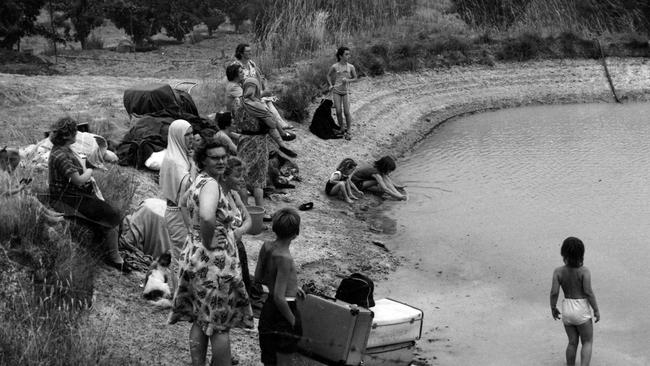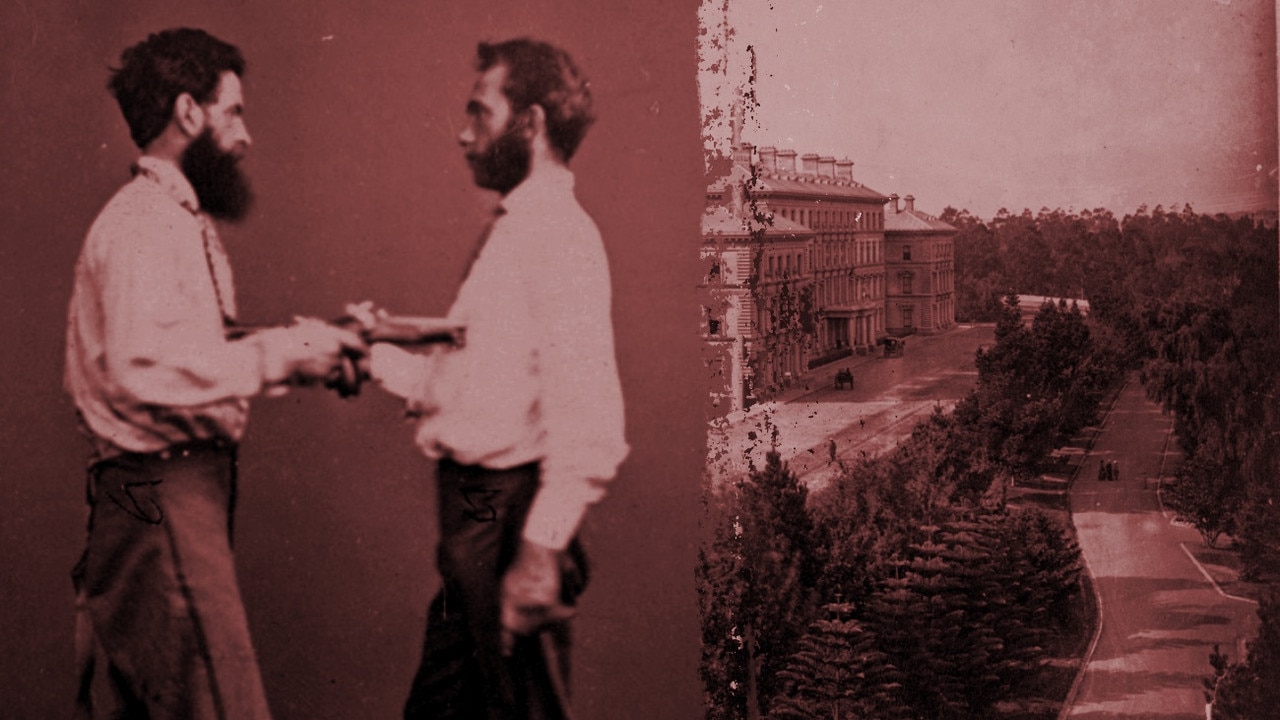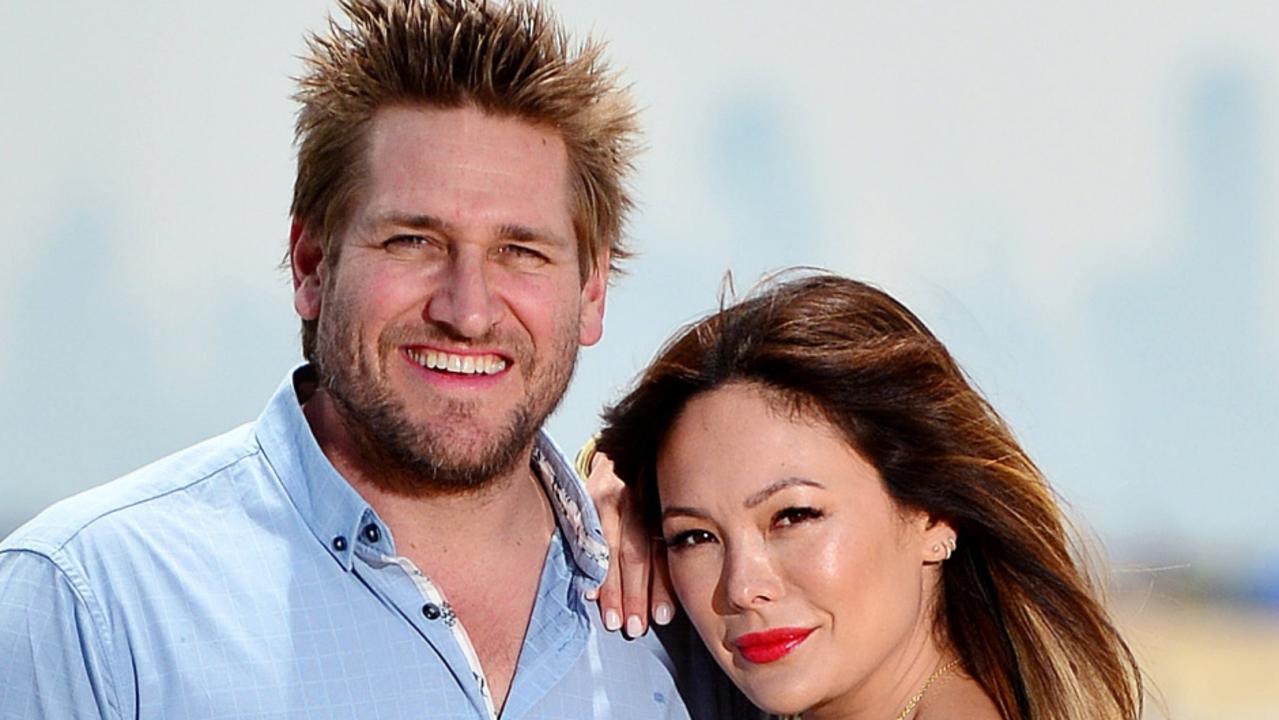Suburbs in peril as deadly bushfires shocked Melbourne in 1962
IN January 1962, bushfires killed 32 people, claimed 450 houses and brought terror to thousands of people as the fires hit Melbourne’s new suburban frontier.
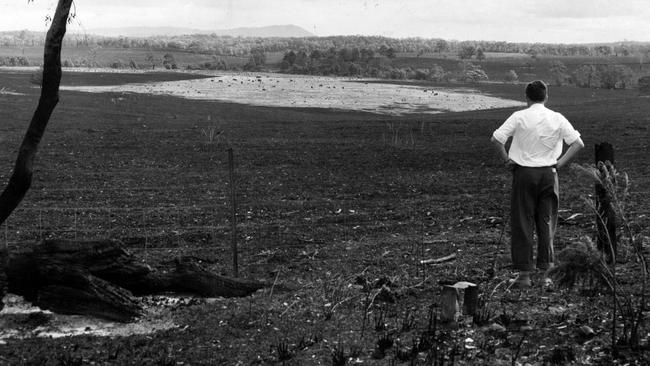
Melbourne
Don't miss out on the headlines from Melbourne . Followed categories will be added to My News.
IN THE early 1960s, sprawling Melbourne’s suburban frontier spread towards the Dandenongs as families set out to carve out a new life in the post-war boom.
But 55 years ago this week, the worst bushfires Victoria had seen since the Black Friday disaster in 1939 tore into some of those burgeoning suburbs, killing 32 people and destroying 450 homes.
Over three days, those ferocious blazes swept over the foothills, into Dandenongs and across the
Yarra Valley.
A ring of fires stretched from the Kinglake and St Andrews across to Healesville and around to The Basin, but others raged near Daylesford and Wye River.
Lightning started some of the fires. Arsonists started others.
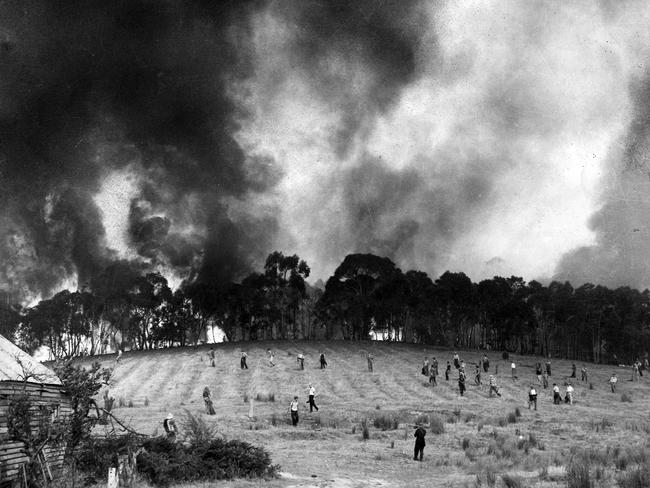
One of the most destructive fires burned across the Yarra Valley into the suburbs as far as Mitcham.
That fire began at Christmas Hills, near Eltham, on Sunday, January 14, 1962, and initially burned northwest towards Panton Hill on a southerly breeze.
The immensity of the danger volunteers faced was captured by Sun News-Pictorial photographer Geoff Bull at Panton Hill.
Bull won a Walkley Award for best news picture with his image of dozens of men, armed with
hessian sacks and hand tools, standing in a clearing at Panton Hill, near Hurstbridge, as the fire
crowned in the treetops nearby.
A separate fire began in the Dandenongs and raced from The Basin up the steep slope of Mount
Dandenong.
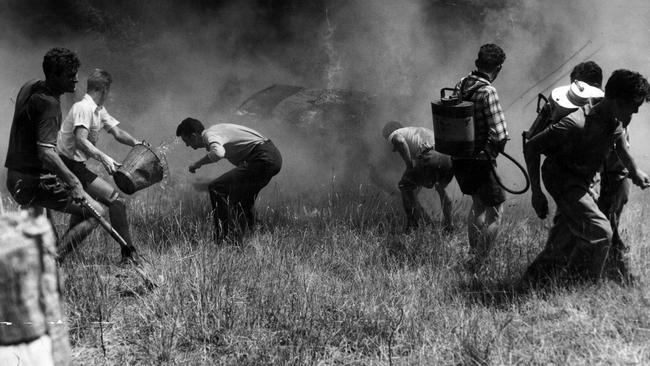
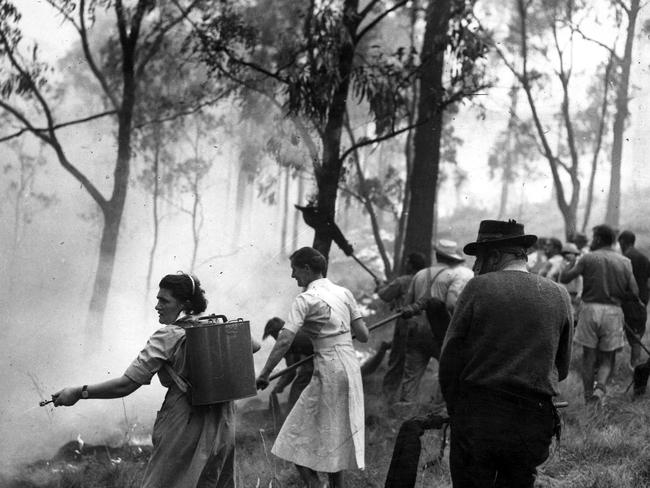
By the Monday morning, the fire was within metres of the transmission towers at the summit of
Mount Dandenong, threatening TV broadcasts for a time, and destroying dozens of houses in Olinda and Kalorama on its way towards Lilydale and Mount Evelyn.
The fires caused an eerie red glow in the night sky and a glow of another kind in loungerooms all over Melbourne, as viewers watched footage of the fires on television.
This was something new for Victorians who were accustomed to bushfires.
Television came to Melbourne a little more than five years earlier.
For the first time, grainy black and white footage from the fire zones near the city were broadcast for all to see.
The weather worsened the crisis.
The temperature, already in the mid-30s on Monday, soared to around 40C on Tuesday with hot, dry north-westerly winds.
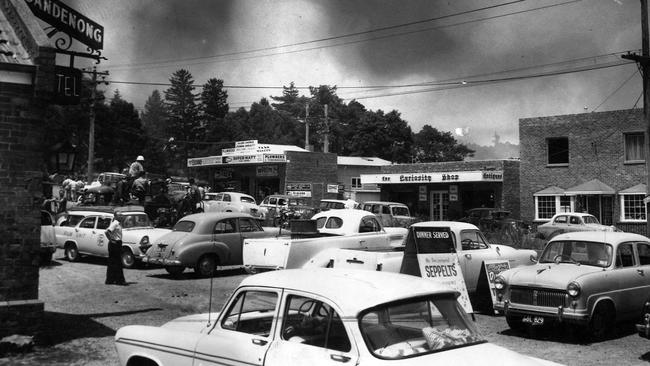
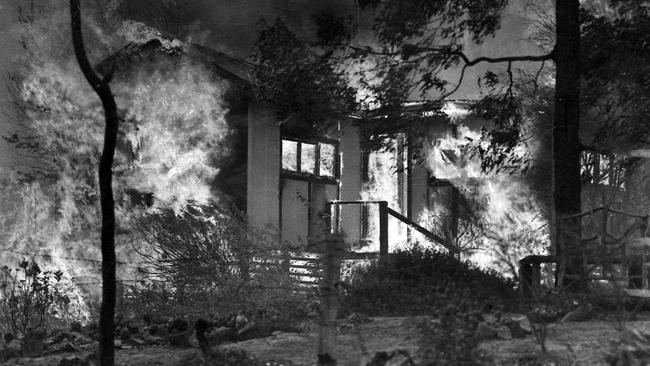
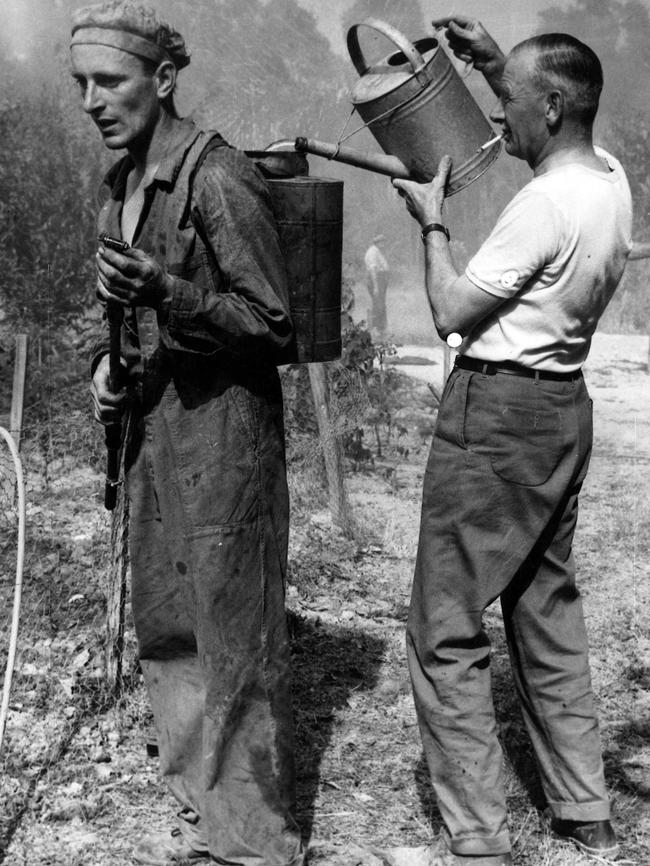
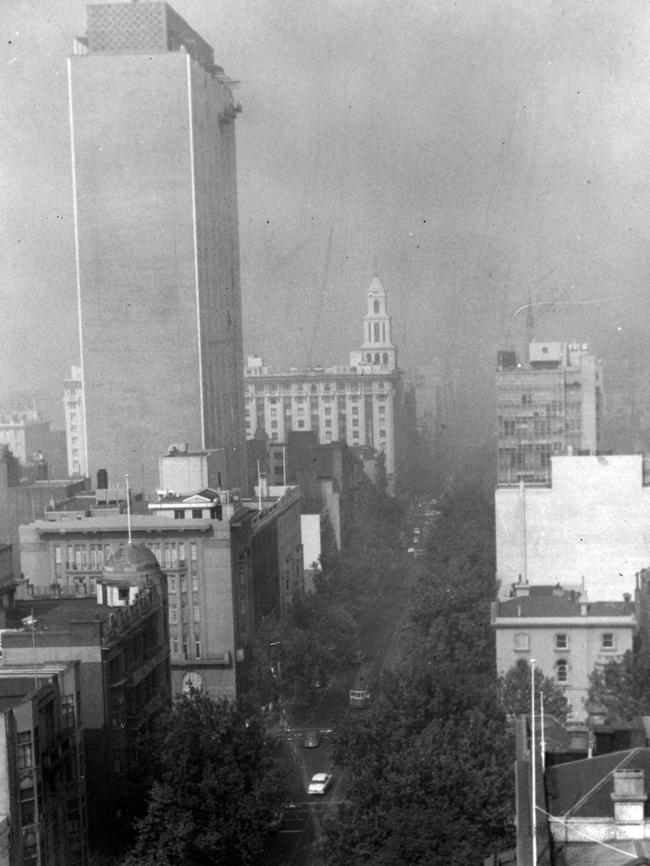
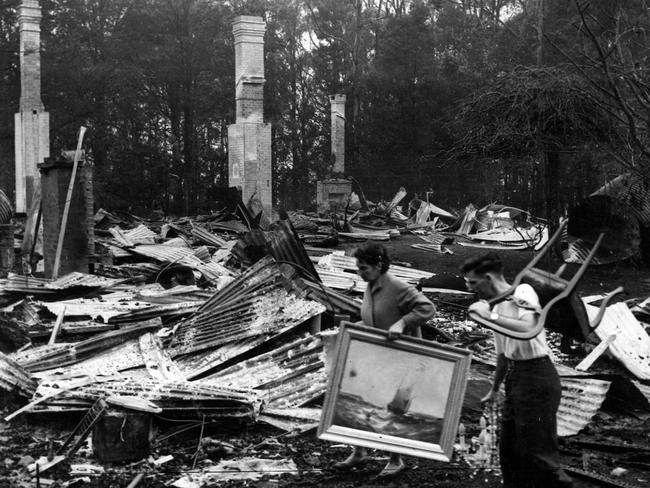
The Christmas Hills/Panton Hill fire had burned into Hurstbridge and St Andrews.
It turned, and raced south across the Yarra Valley, through Warrandyte and Wonga Park, and into
the burgeoning suburb of Mitcham.
It jumped both the Maroondah Highway and Canterbury Road and got within 19km of the CBD.
By Wednesday, the Sun’s front page illustrated the shock Melburnians felt. It’s headline simply read: “It leaps into suburbs”.
It was only another weather change in the weather that stopped the fires, as cooler conditions and solid rain quelled the flames.
The worst-hit areas included Warrandyte, Hurstbridge and Panton Hill, Olinda, The Basin, Mount
Evelyn and Eltham. Homes were also lost in Mitcham, Lilydale, Ringwood, Ferntree Gully, Belgrave and Boronia.
Much of the Dandenongs between The Basin and Mount Evelyn was blacked out.
Bushfires had happened before in these areas, but the game had changed by 1962.
Many of those areas were former farming districts and towns that were becoming suburbs as post-war prosperity and immigration created a huge demand for suburban blocks further from the CBD.
Large blocks still accommodated a canopy of eucalyptus trees and there was still plenty of scrub
around as suburbs developed.
The Dandenongs have since been hit hard by bushfires, most notably on Ash Wednesday in 1983, while St Andrews, Kinglake, Hurstbridge and many areas just beyond Eltham — by then more densely populated — suffered horrific losses on Black Saturday in 2009.
